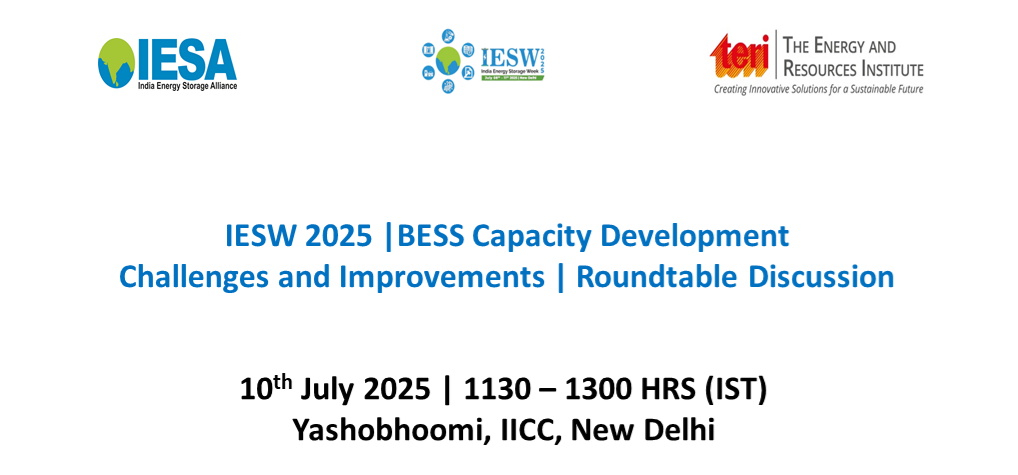IESW 2025 |BESS Capacity Development: Challenges and Improvements | Roundtable Discussion

India’s commitment to achieving net-zero emissions by 2070 requires a transformative shift in its electricity sector, prioritizing high renewable energy (RE) penetration while ensuring grid stability, seasonal balancing, and resource adequacy. According to India’s National Electricity Plan (NEP) by the Central Electricity Authority (CEA), the country’s solar and wind installed capacity is projected to exceed 480 GW by 2031-32. Large-scale RE integration poses challenges related to grid stability and uninterrupted power supply. Energy Storage Systems (ESS) play a critical role in addressing these challenges by mitigating RE generation variability, facilitating greater RE penetration, improving grid stability, enabling peak shifting, and providing ancillary support services. According to the NEP, India’s Battery Energy Storage System (BESS) requirement is expected to reach 47.24 GW by 2031-32.
In a significant policy move to boost grid-scale energy storage, the Ministry of Power approved an expanded Viability Gap Funding (VGF) scheme on June 10, 2025, targeting 30 GWh of Battery Energy Storage Systems (BESS). As of April 2025, a total of 153 GWh of energy storage tenders have been floated in India, out of which 56 GWh is in various stages of execution. Battery storage costs in grid-scale tenders have significantly decreased – by approximately 74% from the SECI tender in August 2022 to the GUVNL tender in April 2025.
In this context, the StoREin (Scaling up Storage in Renewable Energy Integration) project has been initiated to support the expansion of energy storage solutions in India. One of the key components of StoREin is to assess current skill gaps, map institutional capacities, and propose actionable strategies for capacity building and workforce development within the BESS ecosystem.
Despite the growing relevance of BESS, existing training and skilling programs often fall short of industry expectations, particularly in keeping pace with technological advancements and the need for practical, field-ready expertise. Bridging this gap requires a collaborative approach—engaging stakeholders across the value chain to co-create modern, industry-aligned, and scalable training ecosystems.
Objective of the Discussion:
This discussion brings together key stakeholders—including storage developers, manufacturers, system integrators, DISCOMs, consulting firms, educational and training institutions, government agencies, philanthropies, and financing institutions—to identify skill development challenges and co-create solutions to strengthen workforce capabilities across the energy storage sector.
The session aims to generate actionable insights on:
- Gaps in training content and its relevance to industry needs
- Access to practical training infrastructure and lab facilities
- Enhancing hands-on exposure for students and technicians
- Addressing the shortage of skilled and certified professionals
By participating, stakeholders will help shape modern, scalable, and industry-aligned training programs that can support India’s growing energy storage sector and broader clean energy transition.
Key Discussion Points
- Challenges and Opportunities in the Battery Energy Storage Sector
- Identifying Skill Gaps in the Energy Storage Ecosystem
- Creating a More Inclusive and High-Quality Skilled Workforce in BESS
- Skill Development Requirements at the National and State Levels
- Role of the Private Sector in Contributing to and Benefiting from a Skilled Workforce
- Feedback and Input on the Proposed Stakeholder Survey Form
